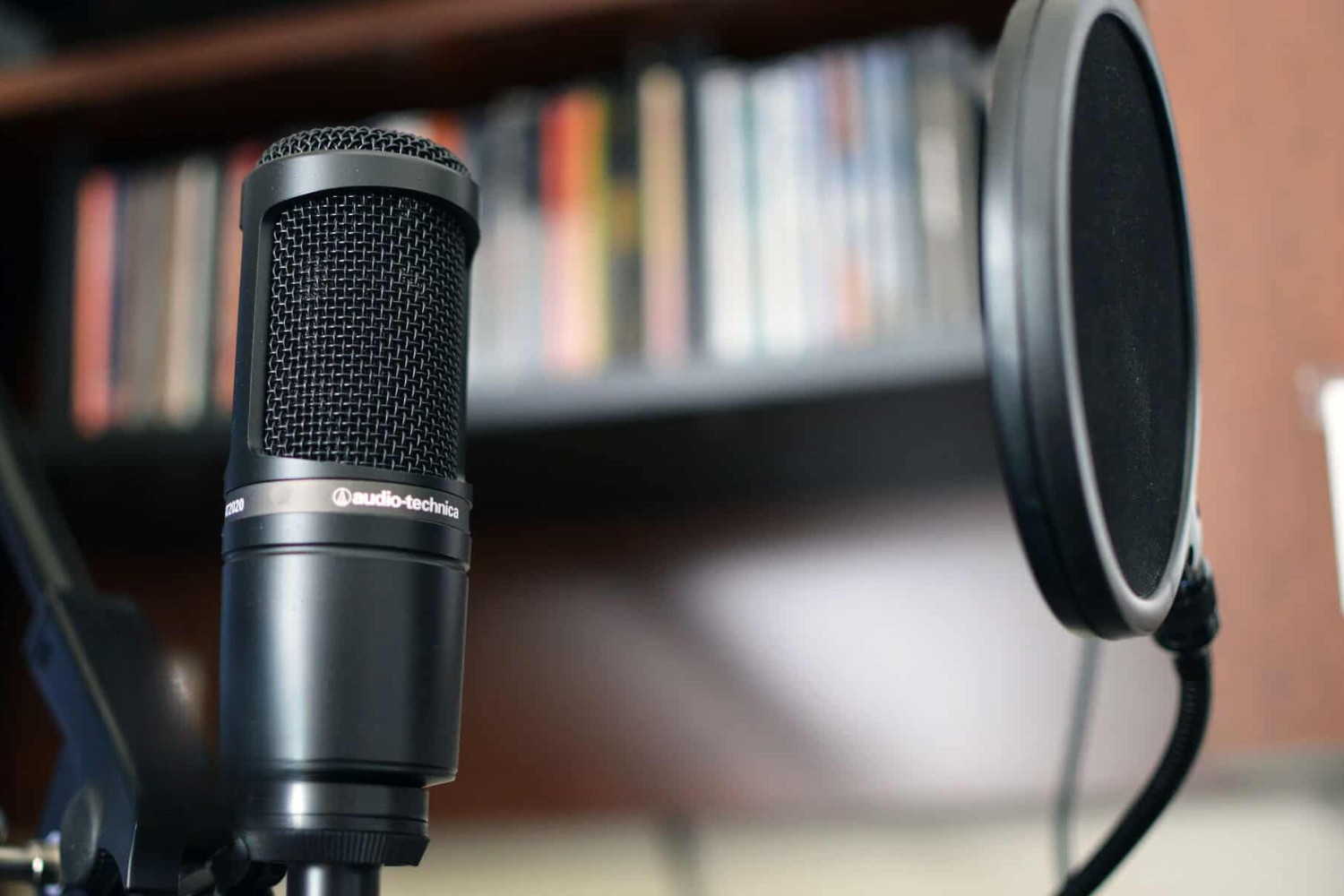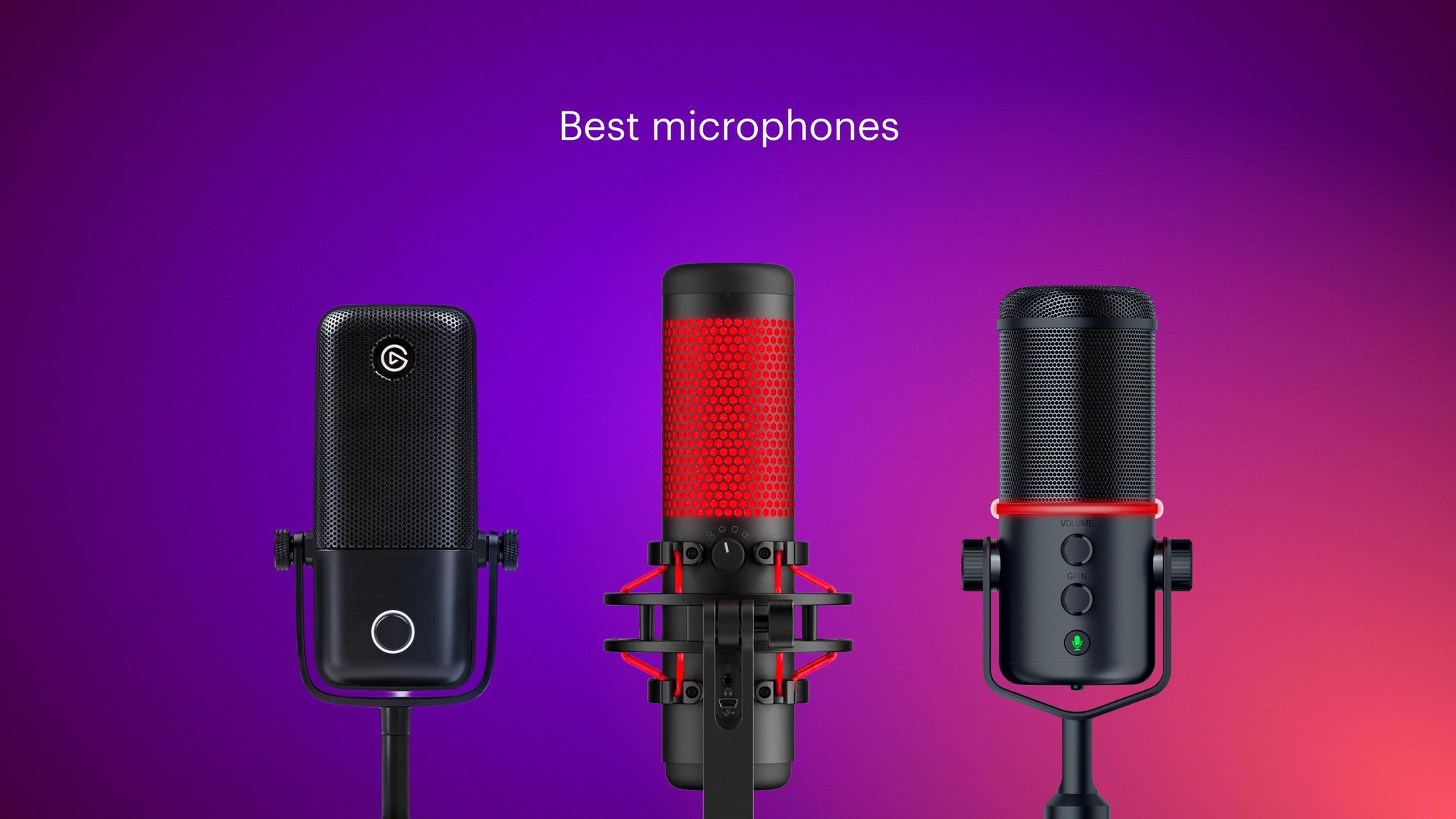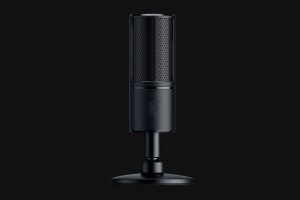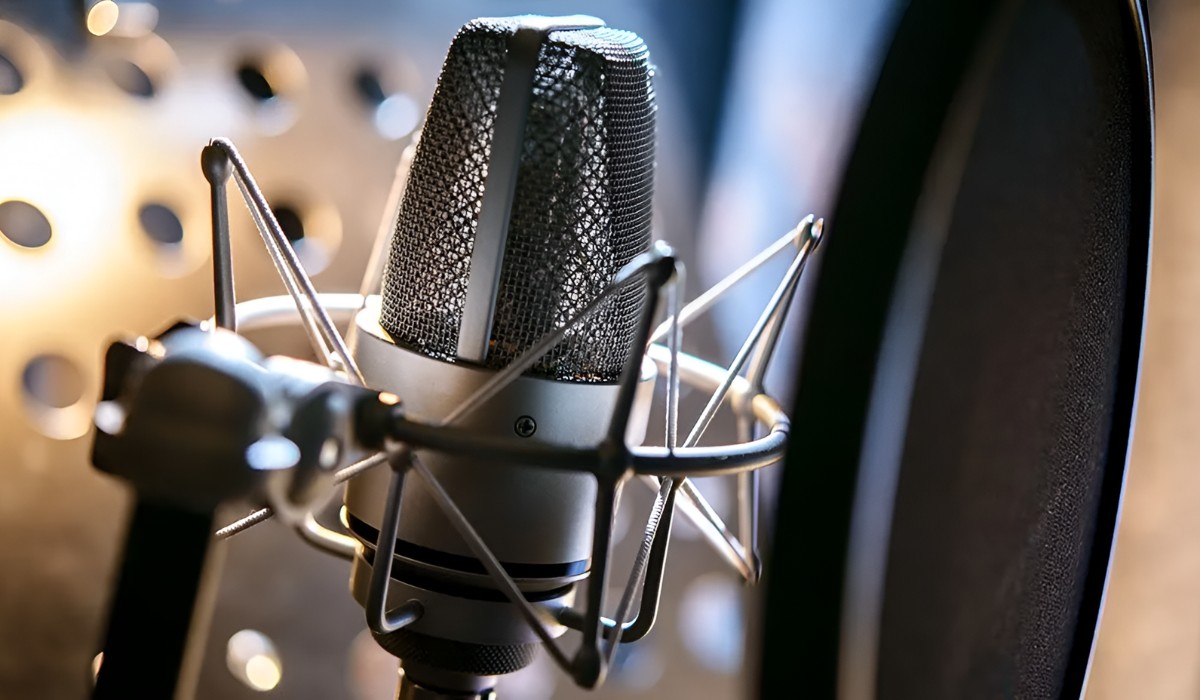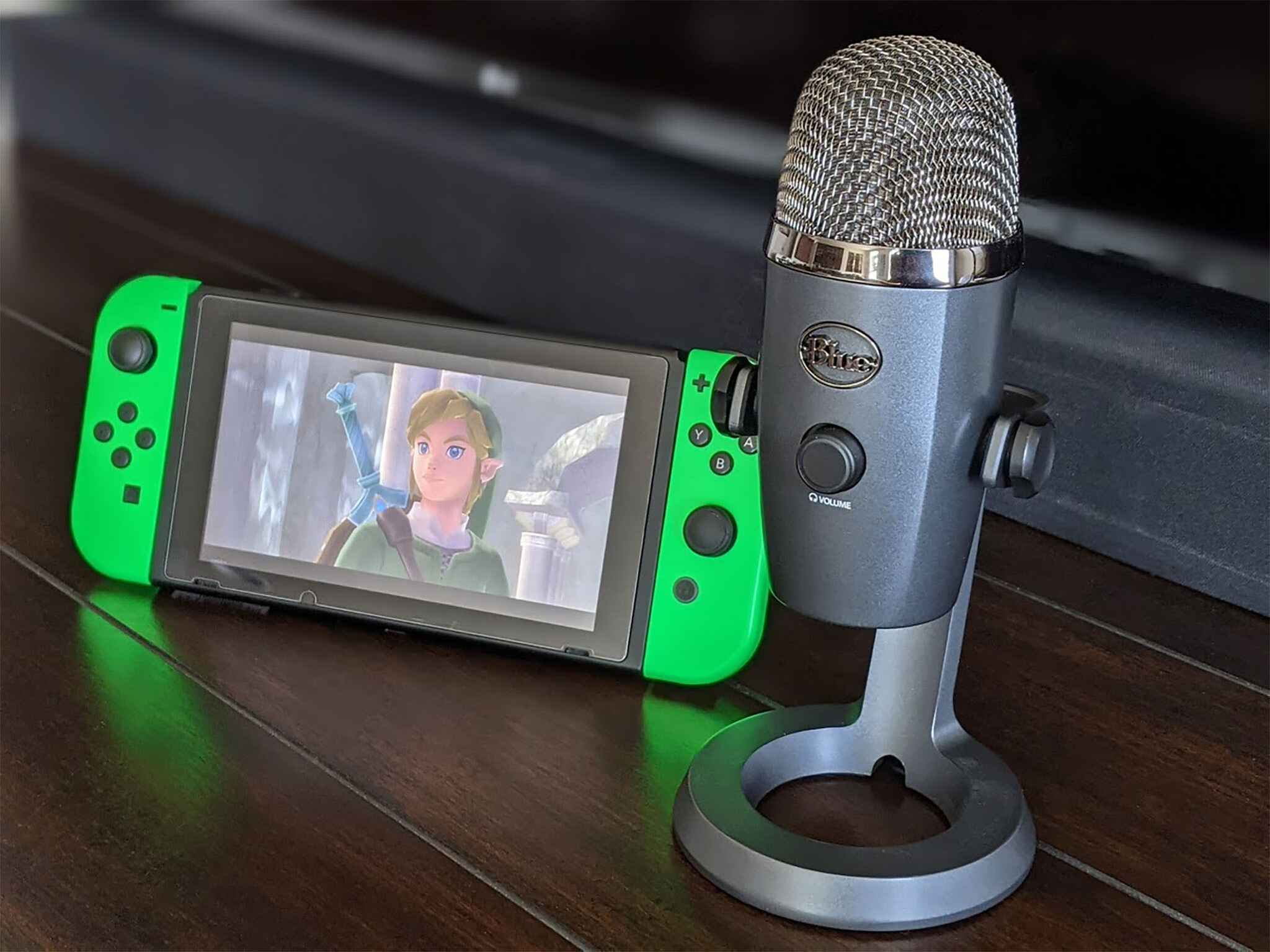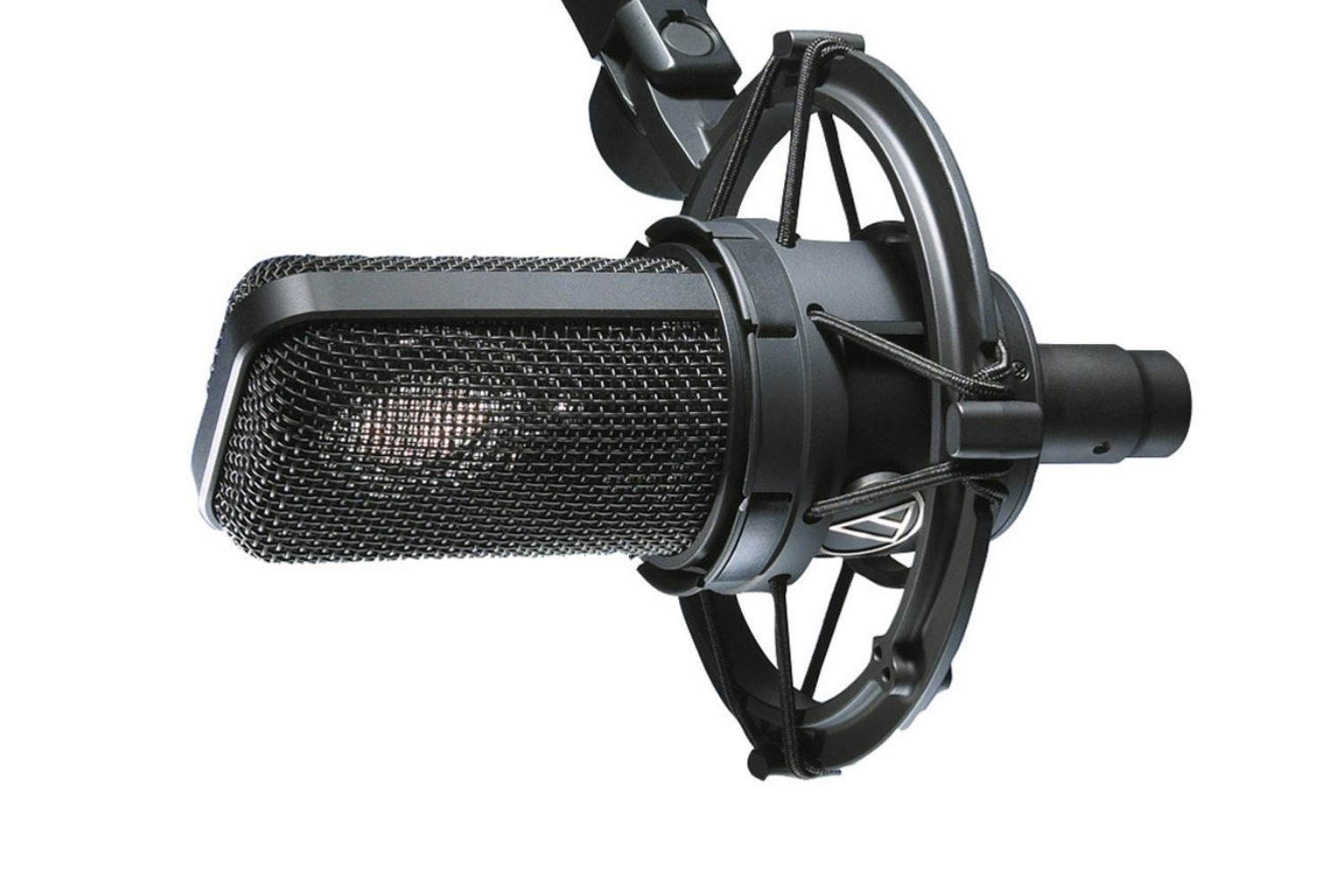Introduction
Welcome to the world of professional audio recording! The AT2020 Cardioid Condenser Microphone is a versatile and high-quality tool that can elevate your sound production to new heights. Whether you are a musician, podcaster, voice-over artist, or content creator, the AT2020 offers exceptional audio capture and clarity. In this guide, we will walk you through the process of setting up and optimizing your AT2020 microphone for stellar performance.
The AT2020 Cardioid Condenser Microphone is renowned for its precision engineering and superior sound reproduction. With its cardioid polar pattern, it effectively captures audio from the front while minimizing background noise, making it an ideal choice for recording vocals, acoustic instruments, and podcasts. Its wide dynamic range and extended frequency response ensure that every nuance of your performance is faithfully captured, delivering professional-grade results.
Setting up the AT2020 microphone is a straightforward process that can significantly enhance the quality of your recordings. By following the steps outlined in this guide, you will be able to seamlessly integrate the AT2020 into your recording setup, allowing you to unleash your creativity without being encumbered by technical complexities.
Whether you are a seasoned audio engineer or a newcomer to the world of recording, this guide will provide you with clear and concise instructions for harnessing the full potential of the AT2020 Cardioid Condenser Microphone. Let's embark on this journey together as we delve into the unboxing, connection, adjustment, and testing of this remarkable microphone. Get ready to elevate your audio recordings to the next level with the AT2020!
Unboxing the AT2020 Cardioid Condenser Microphone
Unveiling the AT2020 Cardioid Condenser Microphone is an exciting first step toward enhancing your audio recording capabilities. As you unbox this professional-grade microphone, you’ll find that it comes with essential components designed to ensure optimal performance and ease of use.
Upon opening the package, you will discover the AT2020 microphone itself, exuding a sleek and robust design that reflects its exceptional build quality. The microphone’s solid construction instills confidence in its durability and reliability, assuring you of its ability to withstand the rigors of regular use.
Accompanying the microphone, you will find a sturdy and adjustable stand mount, which provides a secure and convenient platform for positioning the AT2020 during recording sessions. The stand mount’s flexibility allows you to achieve the perfect microphone placement, ensuring that you capture your audio with precision and clarity.
Additionally, the AT2020 is accompanied by a protective carrying pouch, which serves as a safeguard for the microphone when not in use. This thoughtful inclusion ensures that your AT2020 remains safe from dust, moisture, and minor impacts, preserving its pristine condition and extending its longevity.
Furthermore, the microphone package includes a comprehensive user manual that offers valuable insights into the AT2020’s features, specifications, and recommended operating practices. The user manual serves as an indispensable resource for familiarizing yourself with the microphone’s functionality and optimizing its performance for various recording scenarios.
As you unbox the AT2020 Cardioid Condenser Microphone, take a moment to appreciate the attention to detail and the meticulous packaging that underscores Audio-Technica’s commitment to delivering a premium audio recording experience. The inclusion of essential accessories and the user-friendly design of the microphone and its components set the stage for a seamless and rewarding setup process, laying the foundation for exceptional audio capture and production.
Connecting the AT2020 to Your Computer
Once you’ve unboxed the AT2020 Cardioid Condenser Microphone and familiarized yourself with its components, the next crucial step is to connect it to your computer, enabling you to harness its exceptional audio capture capabilities for your recording projects. The AT2020 can be seamlessly integrated into your computer-based recording setup, whether you’re using a desktop, laptop, or dedicated audio interface.
To establish a reliable connection, begin by identifying the appropriate input on your computer or audio interface for the AT2020 microphone. The AT2020 utilizes an XLR connection, a standard in professional audio recording, ensuring a secure and balanced signal transmission from the microphone to your recording device. If your computer or audio interface does not have an XLR input, you can use an XLR to USB audio interface or a compatible audio interface with XLR inputs to facilitate the connection.
Once you have identified the suitable input, carefully plug the XLR cable into the AT2020 microphone and the corresponding input on your recording device. The secure connection ensures that the microphone’s signal is effectively transmitted without interference, preserving the integrity of your recordings.
It is important to note that the AT2020 is a condenser microphone, which requires phantom power to operate. Many audio interfaces and mixers feature built-in phantom power, which can be activated to provide the necessary voltage for the microphone. Ensure that phantom power is enabled on your recording device to power the AT2020 and enable it to capture audio with its full range and sensitivity.
As you establish the connection between the AT2020 and your computer, take care to secure the cables and position the microphone in a stable and optimal location for recording. The robust and adjustable stand mount included with the AT2020 allows you to position the microphone with precision, ensuring that you capture your audio source with clarity and accuracy.
By connecting the AT2020 to your computer, you are laying the groundwork for leveraging its exceptional audio capture capabilities, setting the stage for immersive and professional-grade recordings across a wide range of applications.
Adjusting the Microphone Settings
With the AT2020 Cardioid Condenser Microphone successfully connected to your computer, the next crucial step is to optimize its settings to achieve the best audio capture for your specific recording needs. Adjusting the microphone settings involves fine-tuning parameters such as input gain, polar pattern selection, and monitoring to ensure that the AT2020 delivers exceptional performance tailored to your recording environment.
One of the primary settings to consider is the input gain, which dictates the microphone’s sensitivity to sound. When adjusting the input gain, strive to find the optimal level that captures your audio source with clarity while minimizing background noise and distortion. Many audio interfaces and recording software applications feature visual level meters that provide real-time feedback, allowing you to gauge the input signal and make precise adjustments to the gain settings.
Furthermore, the AT2020 features a cardioid polar pattern, which is ideal for capturing audio from the front while attenuating sound from the sides and rear. This polar pattern selection is particularly advantageous for isolating the desired sound source and reducing unwanted ambient noise, making it suitable for a wide range of recording scenarios, from vocal performances to instrument recordings.
Additionally, consider enabling monitoring features to facilitate real-time listening to the microphone’s output. Monitoring allows you to hear the audio being captured by the AT2020, providing invaluable feedback during recording sessions. Whether you are monitoring through headphones connected to your audio interface or utilizing software-based monitoring within your recording application, ensuring that the microphone’s output is clear and free from artifacts is essential for achieving high-quality recordings.
As you adjust the microphone settings, take the time to experiment with different configurations to familiarize yourself with the AT2020’s capabilities and tailor its performance to your specific recording requirements. By fine-tuning the input gain, polar pattern selection, and monitoring options, you can unleash the full potential of the AT2020, empowering you to capture pristine audio with precision and clarity.
Testing the Microphone
Once you have adjusted the settings of the AT2020 Cardioid Condenser Microphone to suit your recording environment, it is essential to conduct thorough testing to ensure that the microphone delivers the desired audio quality and meets your specific requirements. Testing the microphone encompasses evaluating its performance across various recording scenarios, verifying its ability to capture vocals, instruments, or any other sound sources with precision and fidelity.
Begin the testing process by conducting a sound check to verify that the AT2020 is capturing audio with the desired clarity and sensitivity. Speak or perform into the microphone at varying distances and angles to assess its responsiveness and tonal accuracy. By doing so, you can ascertain the microphone’s ability to faithfully reproduce your voice or instrument, ensuring that it captures the nuances of your performance with precision.
Subsequently, consider recording a vocal passage or instrument performance to evaluate the AT2020’s audio capture in a real-world scenario. Whether you are singing, speaking, or playing an instrument, the microphone’s performance during the recording process provides valuable insights into its tonal characteristics, dynamic range, and transient response. Listen attentively to the recorded audio, paying attention to the nuances and subtleties of the captured sound to gauge the microphone’s fidelity and suitability for your specific applications.
Furthermore, if you intend to use the AT2020 for podcasting or voice-over work, conduct test recordings to assess its ability to capture spoken word with clarity and intelligibility. Evaluate the microphone’s performance in capturing nuanced vocal inflections, enunciation, and tonal warmth, ensuring that it elevates the quality of spoken-word recordings and enhances the delivery of your vocal content.
For instrument recording, test the AT2020’s ability to faithfully capture acoustic instruments such as guitars, pianos, or percussion. Assess its capacity to capture the instrument’s timbre, resonance, and transient detail, ensuring that it preserves the natural sonic characteristics of the instrument and delivers a true-to-life representation of the sound source.
By conducting comprehensive testing across diverse recording scenarios, you can ascertain the AT2020’s suitability for your specific audio production needs, ensuring that it consistently delivers exceptional performance and faithfully captures the nuances of your voice, instruments, or any other sound sources with precision and fidelity.
Conclusion
As you conclude the process of setting up and testing the AT2020 Cardioid Condenser Microphone, you have embarked on a journey toward elevating your audio recording capabilities and achieving professional-grade results. The meticulous unboxing, seamless connection to your computer, precise adjustment of microphone settings, and comprehensive testing have provided valuable insights into the AT2020’s exceptional performance and versatility across diverse recording scenarios.
The AT2020’s robust construction, coupled with its cardioid polar pattern and extended frequency response, positions it as an indispensable tool for capturing vocals, instruments, podcasts, and a myriad of other sound sources with unparalleled clarity and fidelity. By leveraging its exceptional audio capture capabilities, you can enhance the quality of your recordings, unlock new creative possibilities, and immerse your audience in captivating sonic experiences.
Furthermore, the user-friendly nature of the AT2020, complemented by its thoughtful inclusions such as the adjustable stand mount and protective carrying pouch, underscores Audio-Technica’s commitment to delivering a premium audio recording experience that seamlessly integrates into your creative workflow.
As you venture into the realm of professional audio recording with the AT2020, continue to explore its capabilities, experiment with different recording techniques, and unleash your creativity with confidence, knowing that the AT2020 stands as a reliable and versatile partner in your quest for sonic excellence.
Whether you are a musician, podcaster, content creator, or voice-over artist, the AT2020 Cardioid Condenser Microphone empowers you to capture the essence of your performances with uncompromising precision and artistry, ensuring that your recordings resonate with authenticity and immersive sonic detail.
With the AT2020 as your trusted companion, you are poised to embark on a transformative audio recording journey, where every vocal nuance, instrument timbre, and spoken word eloquence is faithfully preserved, allowing your creative vision to resonate with unparalleled clarity and emotional impact.







